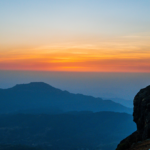
Carved amidst the rugged Aravalli hills of Rajasthan lies Mount Abu, a refreshing escape from the desert heat and a treasure trove of cultural wonders. Often referred to as the “Oasis in the Desert,” this hill station boasts not just scenic beauty but also a rich heritage waiting to be unveiled. So, ditch the usual Rajasthan itinerary and delve into the cultural delights that Mount Abu has to offer.
A Jain Pilgrim’s Paradise:
Mount Abu’s cultural tapestry is intricately woven with Jainism, one of India’s ancient religions. The Dilwara Temples, considered architectural marvels, are the crowning jewels of Mount Abu’s cultural scene. Comprising five intricately carved Jain temples, the complex showcases stunning craftsmanship in marble. Sunlight filtering through the ornate ceilings illuminates the intricate carvings and creates a mesmerizing ambiance. Be mesmerized by the Vimal Vasahi temple, renowned for its sheer architectural brilliance and its intricate pillars adorned with mythological figures.
Beyond Dilwara: Unveiling Jain Heritage:
While Dilwara steals the spotlight, Mount Abu offers more for the culturally curious Jain traveler. Visit the Adinath Temple, dedicated to the first Jain Tirthankara (spiritual leader). Explore the Achaleshwar Mahadeo Temple, a revered Hindu temple believed to be the abode of Lord Shiva. For a deeper understanding of Jainism, head to the Jain Museum, housing a vast collection of ancient Jain sculptures, manuscripts, and paintings.
A Glimpse into Rajasthan’s Royal Past:
Mount Abu boasts a history intertwined with Rajputana royalty. The imposing Mehrangarh Fort, perched atop a hill, offers a glimpse into the region’s military heritage. Explore the fort’s ramparts, courtyards, and chambers, each whispering tales of valor and royal life. Next, visit the Nakki Lake, a scenic spot surrounded by hills and temples. Legend has it that a falling nail (Nakki) created the lake, lending it its name. Boating on the tranquil waters as the sun paints the sky in hues of orange and pink is a truly magical experience.
A Celebration of Tribal Culture:
Mount Abu is not just about Jain temples and Rajput forts. It’s also a vibrant hub for tribal communities like the Bhils and the Garasias. Immerse yourself in their rich culture by visiting the Shrijan Market, showcasing exquisite handcrafted artifacts, textiles, and jewelry by local artisans. Witness their traditional dances and music performances, a colorful explosion of rhythm and vibrancy.
Experiencing Local Delights:
No cultural exploration is complete without indulging in the local cuisine. Mount Abu offers a unique culinary experience with Rajasthani and Gujarati influences. Savor a warm plate of Dal Baati Churma, a staple Rajasthani dish. Tantalize your taste buds with flavorful Marwari curries like Laal Maas (red meat curry) and Seb ki Sabzi (curry made with vegetables and fruits). Don’t forget to try the local Peda, a melt-in-your-mouth sweet made with condensed milk and nuts.
A Festival of Lights:
If you’re fortunate enough to visit Mount Abu during the Diwali festival, witness a spectacular display of lights and colors. Temples and homes are adorned with diyas (oil lamps), creating a mesmerizing scene. Immerse yourself in the festive spirit, witness vibrant fireworks displays, and experience the warmth of Rajasthani hospitality.
Beyond the Cultural Delights:
While the cultural treasures are Mount Abu’s heart, the hill station offers something for everyone. Take a scenic boat ride on Nakki Lake or enjoy a leisurely stroll along its banks. For the adventurous soul, explore the rugged terrains with a trek to Mount Abu’s highest peak, Guru Shikhar. Visit the Sunset Point for breathtaking panoramic views as the sun dips below the horizon, painting the sky in fiery hues.
Planning Your Cultural Escape:x
- Research and plan: Decide which cultural aspects interest you most and plan your itinerary accordingly. Consider attending traditional dance performances or visiting local festivals.
- Choose the right season: Mount Abu offers pleasant weather year-round, but the monsoon season (July-September) brings lush greenery. For outdoor activities, the winter months (November-February) are ideal.
- Dress modestly: When visiting Jain temples, dress modestly with shoulders and knees covered.
- Respect local customs: Be mindful of local customs and traditions when interacting with the tribal communities and visiting religious sites.
Mount Abu beckons you to embark on a cultural odyssey, a journey beyond the usual tourist trail. Unveil the rich tapestry of Jainism, delve into Rajasthan’s royal past, and experience the vibrant spirit of the local tribes. So, pack your bags




Comment 01
zoritoler imol,
04 April, 2025I have been exploring for a bit for any high-quality articles or weblog posts on this sort of house . Exploring in Yahoo I ultimately stumbled upon this site. Studying this information So i am happy to exhibit that I have an incredibly excellent uncanny feeling I found out exactly what I needed. I such a lot definitely will make sure to don¦t overlook this site and give it a glance regularly.